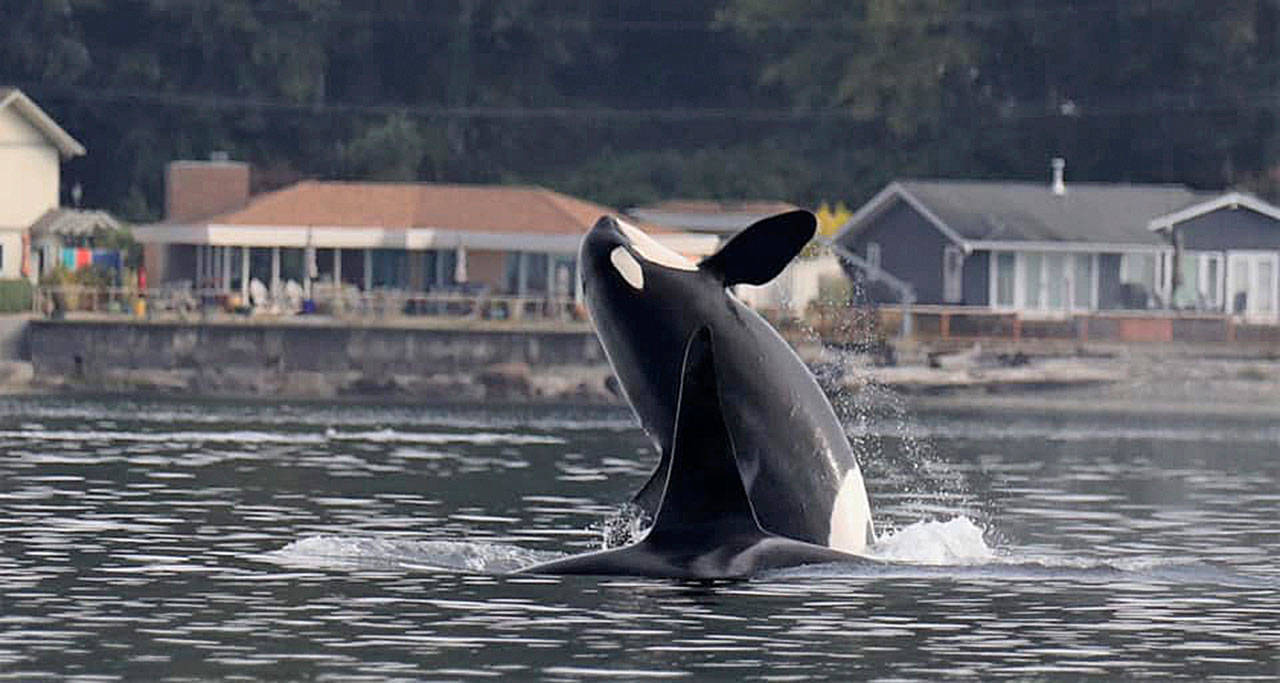A surprise September visit from more than two dozen southern resident killer whales delighted islanders watching from shore last week as the animals circumnavigated Vashon, traveling past Fauntleroy, heading for the south end and then back up Colvos Passage.
Amy Carey, the executive director of Sound Action, said they came for salmon, not the scenery.
“We actually saw them eating fish — there was something here for them,” she said, noting that it was their most recent gallivant off of island shores in the daylight hours. She added that the encounter was unusual for this time of year, as the whales leave Puget Sound in the fall and return during the early winter months.
From the shore along Colvos Passage, Carey said the water was so calm that she could hear the animals breathing. She said their trip around the island was an encouraging sign that the orcas are persevering despite their challenges.
“But they’re all greatly at risk, so even one good day with fish is just a drop in the bucket for them right now,” she added.
The orcas usually spend the beginning days of autumn near the San Juan Islands. Brad Hanson, a wildlife biologist with NOAA’s Northwest Fisheries, said the orcas spent an uncharacteristically long nine days in Puget Sound before moving on. Researchers, he said, have been monitoring the whales to assess their health — looking to see if any are lagging behind their pod or if they are alone — if their respiration is forceful or they are exhibiting signs of malnourishment, which can leave them susceptible to infection and disease.
The births of two calves this year, one in L Pod and the other in J Pod, were extremely encouraging, said Hanson. But as the critically endangered population hangs on at 73, he said the science community fears that most of the orcas are not carrying pregnancies to term and won’t be able to rebound their numbers.
“We’re losing animals out of the population that many times look just fine and then they just disappear,” he said. “This is probably one of the most urban killer whale populations around, and it makes them unique in that regard, and obviously they’re not doing very well. And it begs the question, what are we doing for that population?”
Ann “Orca Annie” Stateler, Vashon’s resident whale and marine mammal expert, noted that when orcas appear to “put on a show,” spy-hopping and breaching from the water, the animals may, in reality, be reacting to nearby vessel disturbance. She cited decade-old research funded by NOAA that found cause to believe the southern residents display such behavior — breaching and slapping their fins — and swim erratically when vessels are close.
Islanders, she added, are urged to report any vessel harassment they witness to NOAA Enforcement at 1-800-853-1964. To make reports of whale sightings, stray seal pups, and stranded marine mammals, call 206-463-9041 or email vashonorcas@aol.com.



